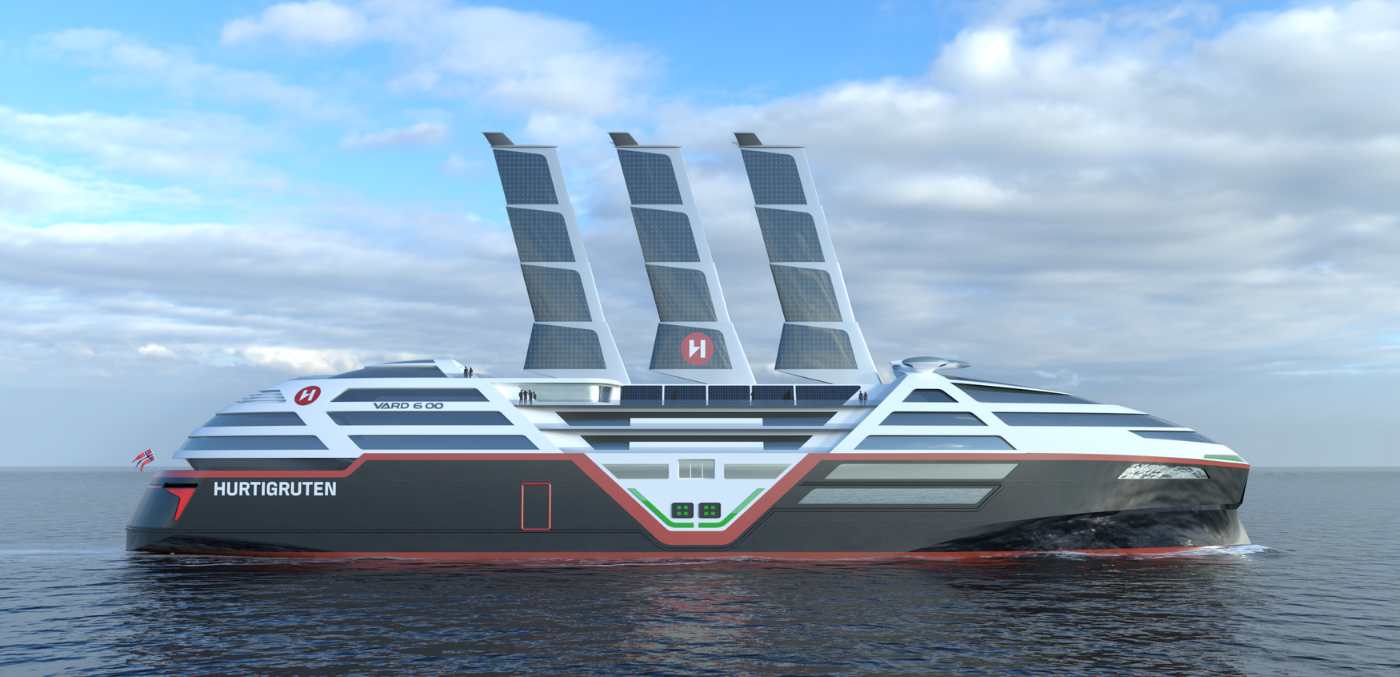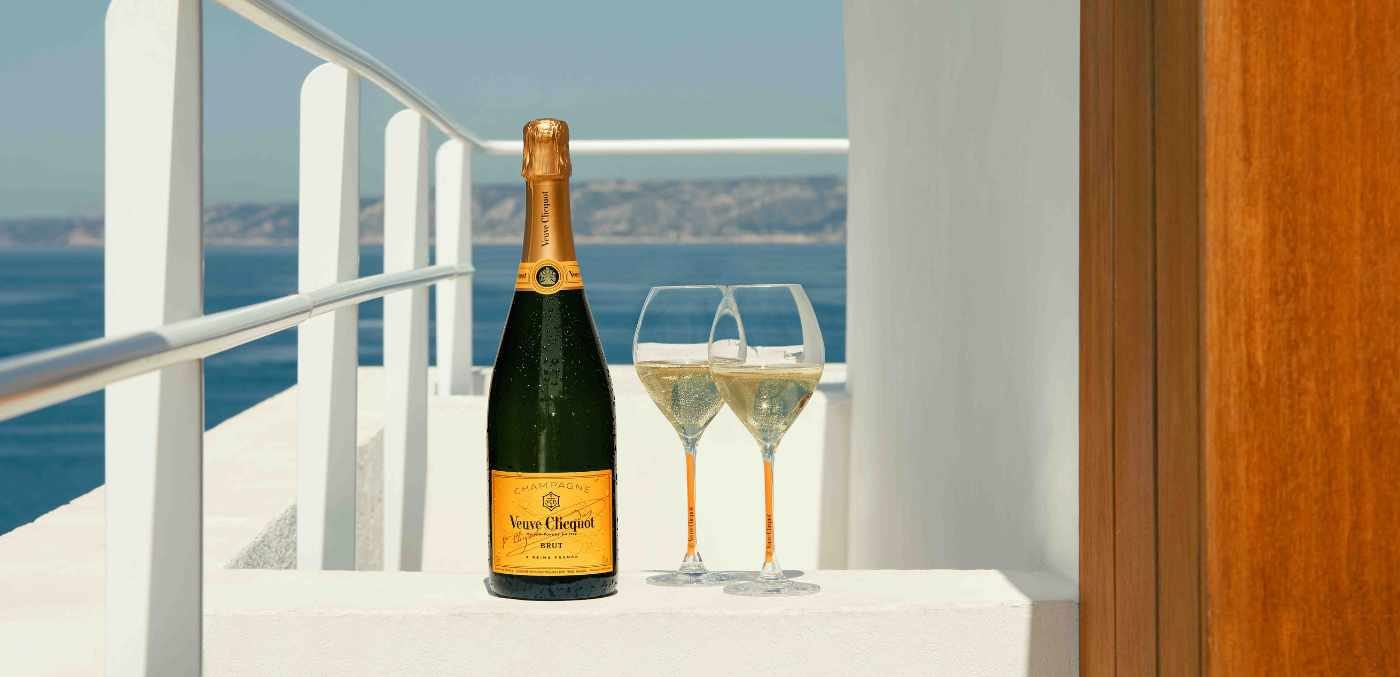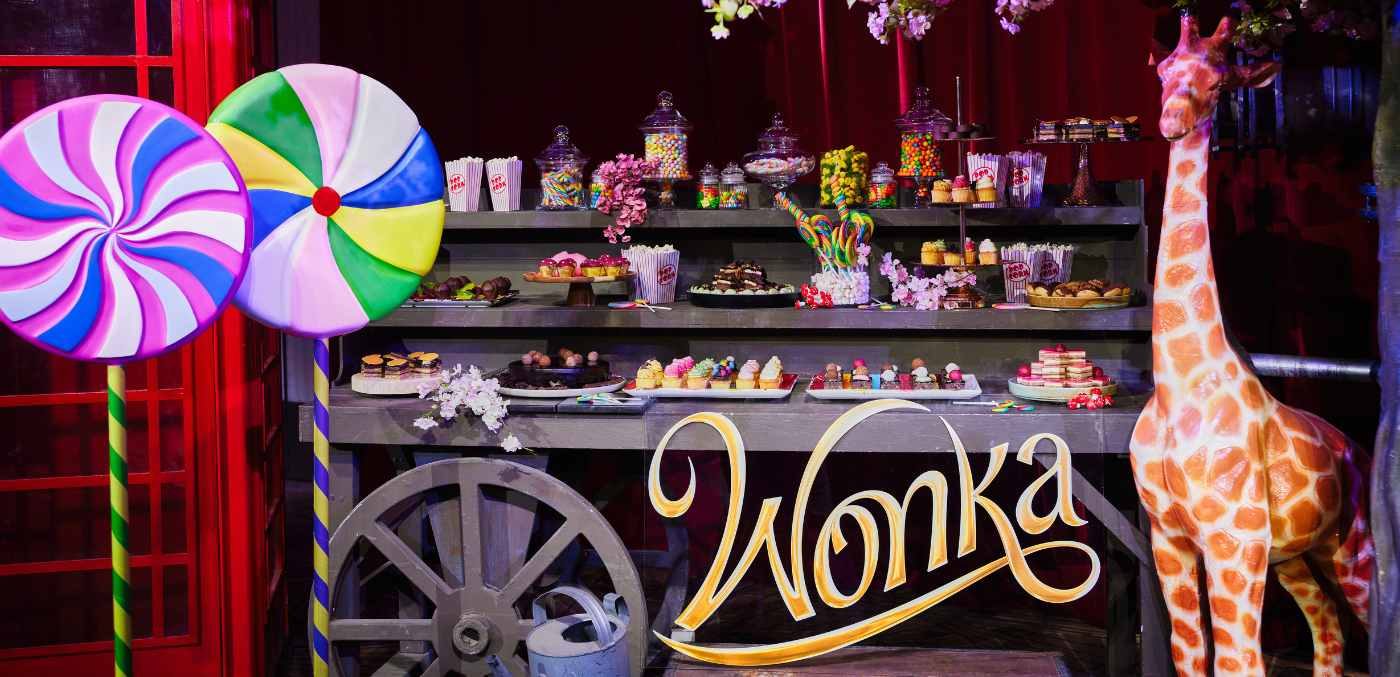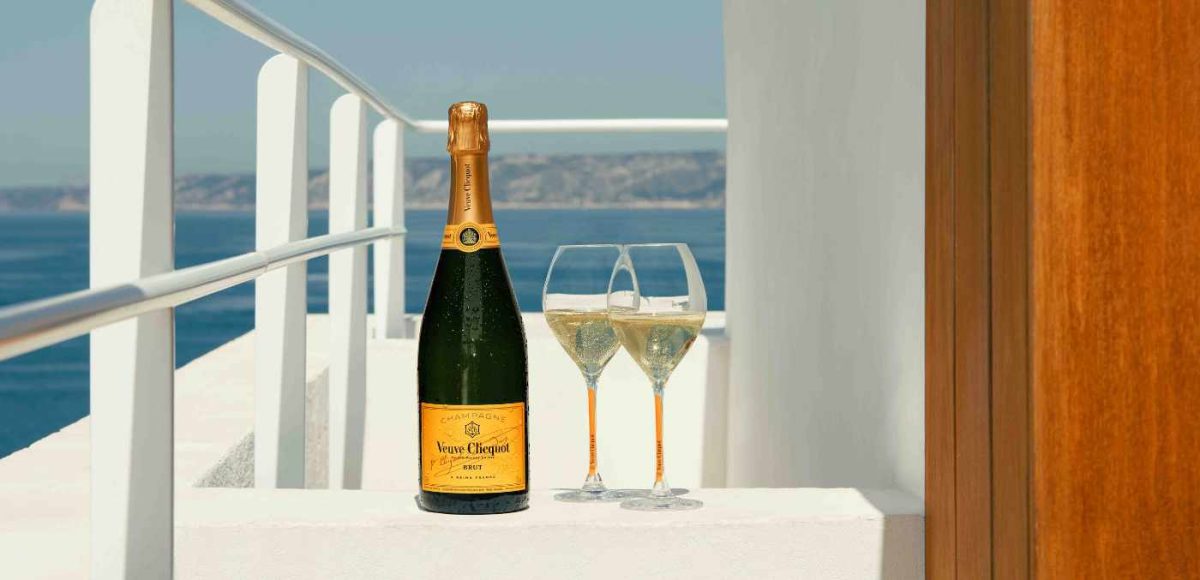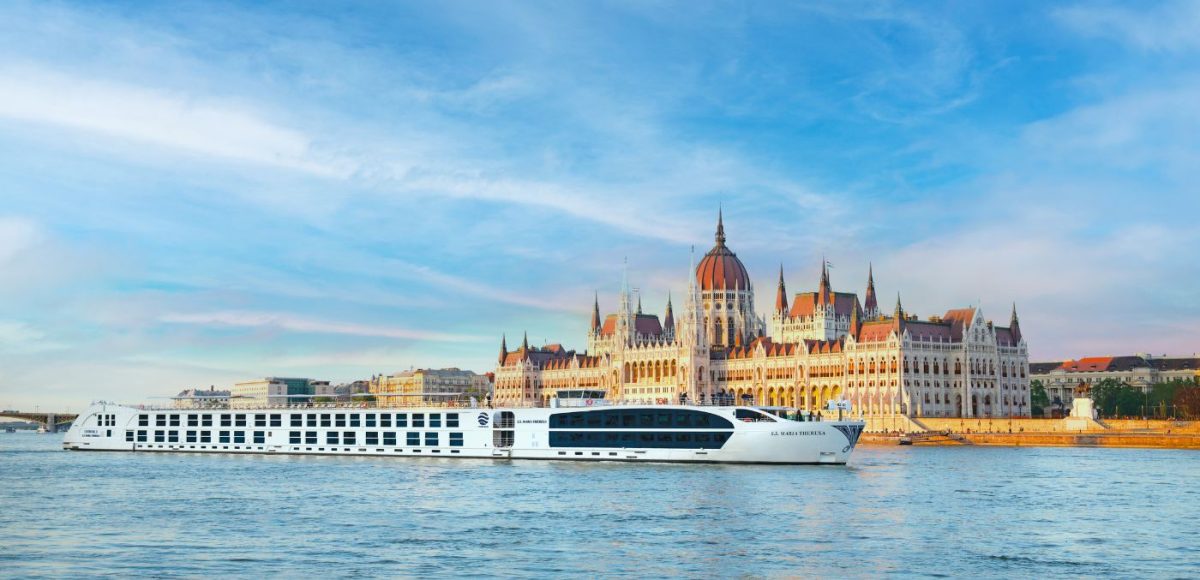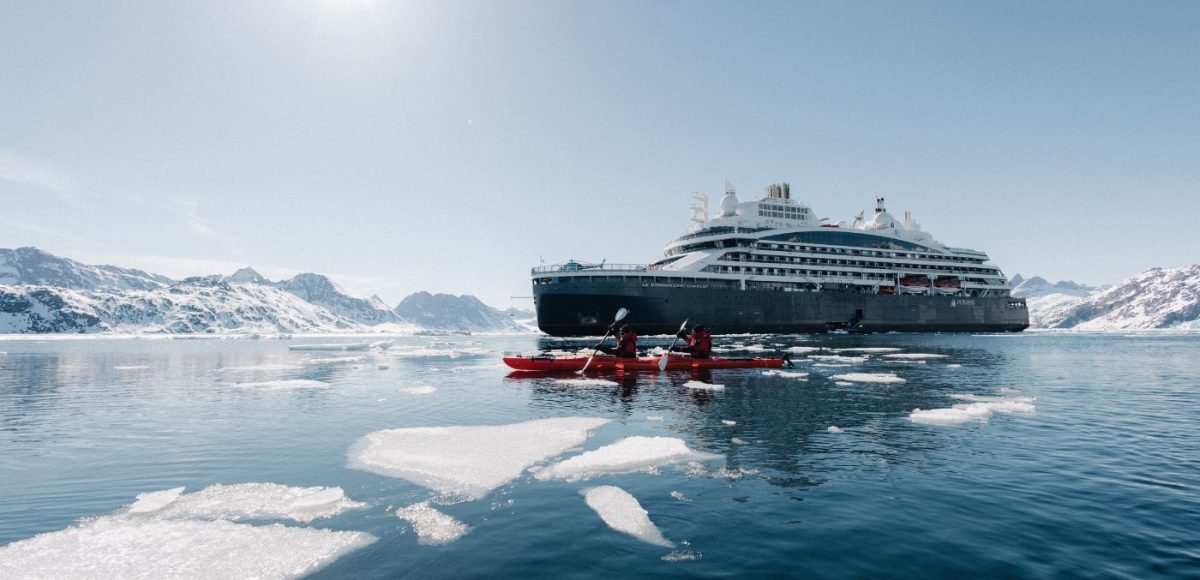Hurtigruten Norway is cruising towards 100 per cent emission-free sailings via the development of Sea Zero, soon to be the world’s most energy-efficient ship.
Freshly fallen snow drapes the mountains surrounding Kirkenes, a small fjord town in Norway’s frozen Arctic and the last stop on Hurtigruten’s Coastal Express service. With harbour seals watching on from the shore, a sleek black and red ship heaves to and hoists its magnificent sails to prepare for its return voyage. Only, the year is 2030. And those 50-metre sails aren’t made from cotton or linen. They’re constructed of steel and covered in solar panels that will allow Sea Zero, the world’s most energy-efficient ship, to sail with the help of wind and solar power. This is Hurtigruten Norway’s vision for the near future and working together with a consortium of 12 maritime partners and the research institute SINTEF, they’re well on their way to making it a reality.
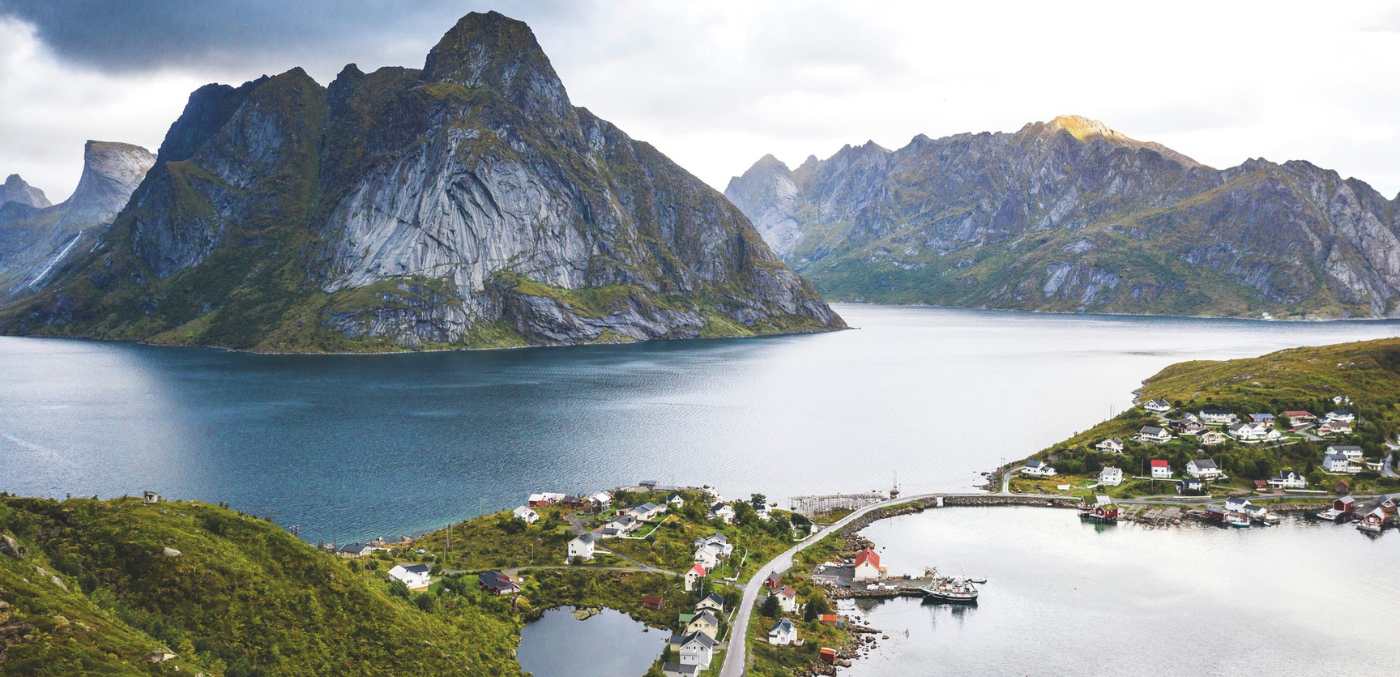
Hurtigruten Norway’s vision for the future: Sea Zero
Hurtigruten Norway’s CEO, Hedda Felin, says Sea Zero will usher in a new era of 100 per cent emission-free cruising that will make use of the best engineering, artificial intelligence, and technology available. But first, they need to build her. “When we initially announced the Sea Zero project, we were faced with the challenge of not knowing which technologies would be available to us in 2030,” says Hedda. “Our task is to pave the way for new innovations and enhance existing ones.” On the eve of its 130th anniversary, the company entered into a two-year research and development phase exploring a range of inventions designed to minimise energy consumption and enhance aerodynamics. This included hidden retractable thrusters, large 60MWh battery banks, and underwater air blowers that will allow the ship to “surf” on a bed of bubbles. Solar panels will be supercharged by Norway’s famous Midnight Sun, when the sun remains above the horizon for 24 hours.
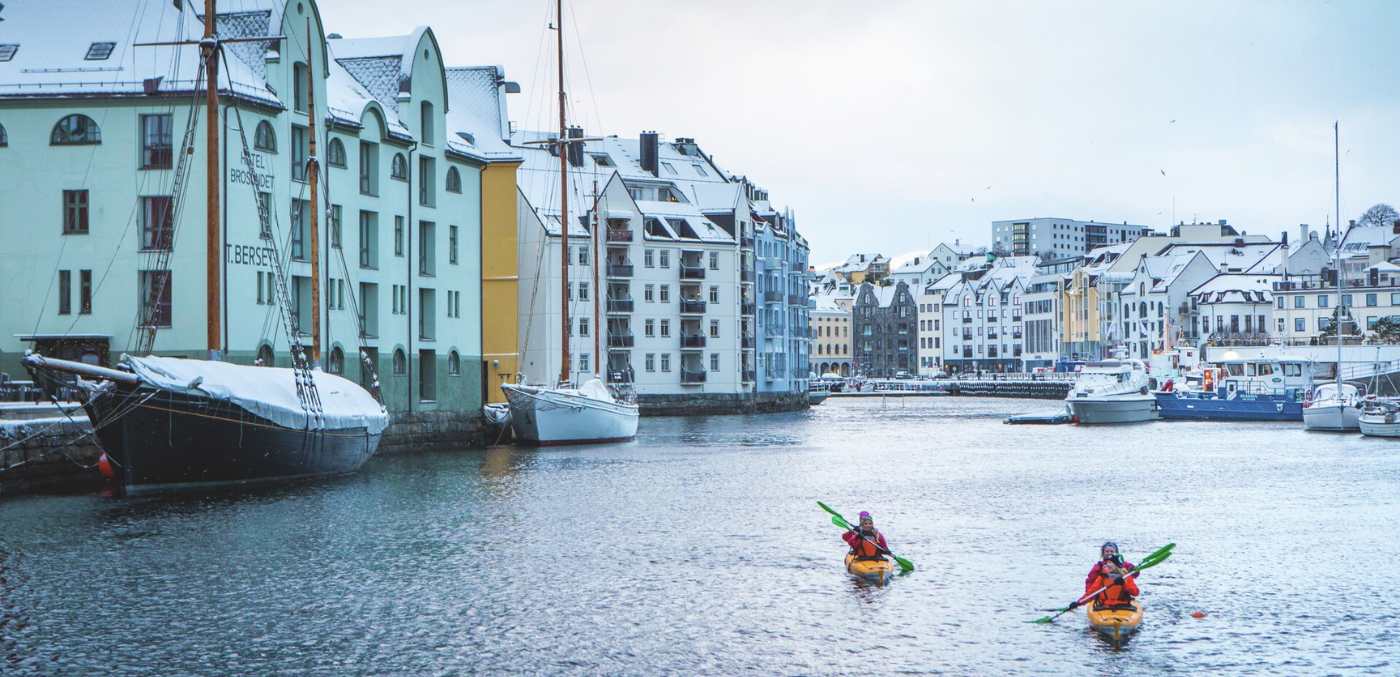
Technology and design of Sea Zero
There’s also innovation away from the hull. The bridge will be equipped with dozens of exterior sensors and cameras that will allow the ship to manoeuvre the Norwegian coastline using AI. This means the bridge can be slimmed down to just the size of an airplane cockpit, narrowing the bow and making it more aerodynamic. Because guests can consume as much as 50 per cent of a ship’s energy usage, when Sea Zero eventually sets sail, her guests will be able to play a role in minimising energy consumption. An interactive mobile app will allow them to control cabin ventilation and measure their water and energy consumption.
As work progresses on Sea Zero behind the scenes, Hurtigruten Norway has already delivered one of the largest maritime upgrades in Europe to bring its fleet up to speed with modern technology. By the end of 2023, three of its seven ships will be upgraded to hybrid battery-powered ships, with the entire fleet fitted with technology that will cut emissions by up to 80 per cent. A similar evolution has already taken place at sister company Hurtigruten Expeditions, which launched the world’s first hybrid expedition ship in 2019, with two more since then. With a fleet of sustainable, emissions-free ships on the horizon, the future of cruising is looking bright.
Read more:
Silver Nova takes to the seas on maiden voyage
A sneak peek inside EXPLORA I
Hurtigruten celebrates 130th anniversary with limited-edition specials
This article originally appeared in volume 45 of Signature Luxury Travel & Style magazine. Subscribe to the latest issue today.







